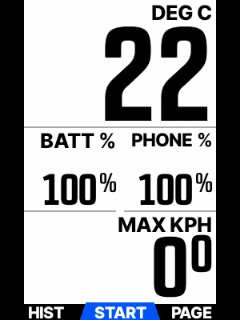Embarking on endurance events like randonneuring or audax demands equipment that can keep pace with cyclists spending entire days and nights on the saddle. A reliable bike computer becomes essential for navigation, performance tracking, and safety during these long rides. This article offers an in-depth comparison of the Wahoo Elemnt Roam V2 and the Wahoo Elemnt Bolt V2 from the perspective of long-distance cyclists. We’ll explore ten critical themes—including battery life, navigation, and durability—to determine which device better suits the relentless demands of ultra-distance cycling, ultimately helping you make an informed choice for your next epic journey.
- Battery Life and Power Management
- Navigation and Mapping Capabilities
- Screen Size and Readability
- Device Durability and Weather Resistance
- Route Planning and Customization
- Data Recording and Performance Metrics
- User Interface and Ease of Use
- Mounting Options and Aerodynamics
- Connectivity and Sensor Compatibility
- Price and Overall Value
Battery Life and Power Management
For long-distance cyclists immersed in randonneuring or audax events, where rides can stretch over 24 hours with minimal rest, battery life isn’t just a convenience—it’s a necessity. The Wahoo Elemnt Roam V2 and the Wahoo Elemnt Bolt V2 both cater to endurance cyclists, but their battery performances offer distinct advantages.
The Wahoo Elemnt Roam V2 boasts a robust battery life of up to 17 hours on a single charge. This extended capacity is crucial for riders who might not have frequent opportunities to recharge. The Roam V2 also features smart power management settings, allowing cyclists to disable non-essential functions to conserve energy further. Its USB-C charging port supports on-the-go charging with a portable power bank, even while riding, ensuring that the device remains operational throughout extended journeys.
In comparison, the Wahoo Elemnt Bolt V2 offers a slightly shorter battery life of up to 15 hours. While still substantial, those extra two hours can be significant when you’re on the saddle through day and night. The Bolt V2 also supports USB-C charging and power-saving modes but may require more strategic planning to keep it running during ultra-endurance events.
From the perspective of someone spending 24 hours or more cycling, the Roam V2’s superior battery life provides an added layer of security and lessens the dependence on external power sources. Ultimately, understanding how each device manages power can make a tangible difference in performance and peace of mind during those relentless, long-haul rides.
Some tips and tricks:
- Make sure to add the battery level as a field on one of your pages. I have one page where I display the temperature, the battery of my phone and the battery of my Wahoo. As I cycle through the pages, I often check the battery level.
- I use my dynamo or a power bank to charge my Wahoo. The power bank is much faster, but I try to keep my power banks full as much as possible, because I don’t want to have to think about charging my power bank when I stop to eat or rest.
- Don’t wait for the last minute to recharge. I tend to plug my Wahoo when there is about 20% left. That’s often around the end of the day, before having to turn on the lights. I don’t want to choose between turning on the lights and charging the GPS. That’s why I try and do it before I need the lights.
| Feature | Roam V2 | Bolt V2 |
|---|---|---|
| Battery Life | Up to 17 hours | Up to 15 hours |
| Power Management Settings | Yes (customizable) | Yes (customizable) |
| USB-C Charging Port | Yes | Yes |
| On-the-go Charging Support | Yes (can charge while in use) | Yes (can charge while in use) |
| Power-saving Modes | Available (disable non-essential functions) | Available (disable non-essential functions) |
| Battery Life Extension Strategies | More effective due to longer base life | Effective but shorter base life |
| Ideal for 24+ Hour Rides | More suitable | Suitable with planning |
| Dependence on External Power Sources | Less frequent charging needed | May require additional charging planning |
| Charging Time | Approximately 1 h 47 | Approximately 1 h 44 |

